To calculate Relative Strength for stock analysis: Select a benchmark index for comparison; Use price momentum to pinpoint outperforming stocks; Monitor Relative Strength Line to identify market leaders; Consider volume alongside RS for thorough evaluation; Analyze healthy price and volume action for accuracy. This process systematically compares a stock's performance to the chosen benchmark, aiding in the identification of market leaders. Mastering this calculation is essential in stock evaluation and decision-making. Understanding these steps will enhance your ability to analyze stocks effectively.
Understanding Relative Strength Calculation
The calculation of relative strength in stock analysis involves a systematic comparison of the stock's price to a designated benchmark index, such as the S&P 500. By dividing the stock price by the benchmark index price, investors can determine how a stock is performing relative to the broader market. This comparison helps identify market leaders, showcasing stocks that are outperforming the market as a whole. The Relative Strength Line, derived from this calculation, becomes a critical tool for investors. It allows for the early recognition of strength in stocks that have the potential to outperform even during market corrections.
Understanding the Relative Strength Line is imperative for investors looking to capitalize on strong stock performance. The RS line, when analyzed alongside price and volume movements, as well as essential CANSLIM fundamentals, provides a thorough picture of a stock's strength. This holistic approach enhances stock evaluation and decision-making processes, enabling investors to make informed choices based on a thorough analysis of relative performance.
Importance of Relative Strength Analysis
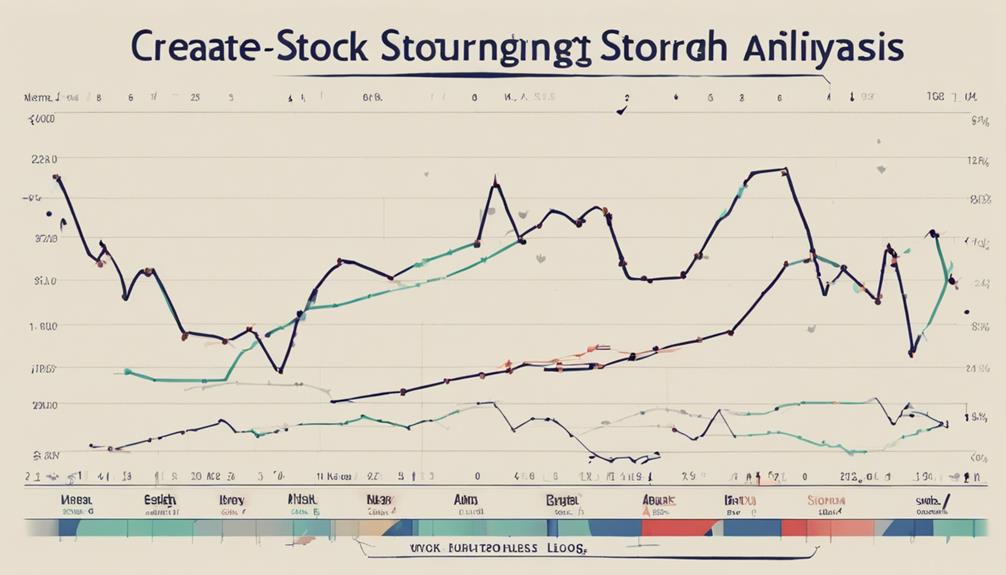
In the domain of stock analysis, understanding the significance of relative strength analysis is essential for discerning investors seeking to pinpoint market leaders with robust price momentum.
- Relative strength analysis compares a stock's price performance to a benchmark index like the S&P 500, providing a gauge of how the stock is performing in relation to the broader market.
- It helps identify stocks that are outperforming or underperforming the overall market, allowing investors to make informed decisions based on comparative performance.
- Utilizing relative strength analysis is vital for finding market leaders with strong price momentum, as it highlights stocks that are potentially poised for continued growth.
- The calculation of relative strength involves dividing the stock price by the benchmark index price to determine the stock's relative strength index (RSI), a key metric for evaluating performance against the market.
Understanding and utilizing relative strength analysis can be instrumental in early identification of high-quality stocks with significant potential for investment opportunities.
Gathering Stock and Index Prices
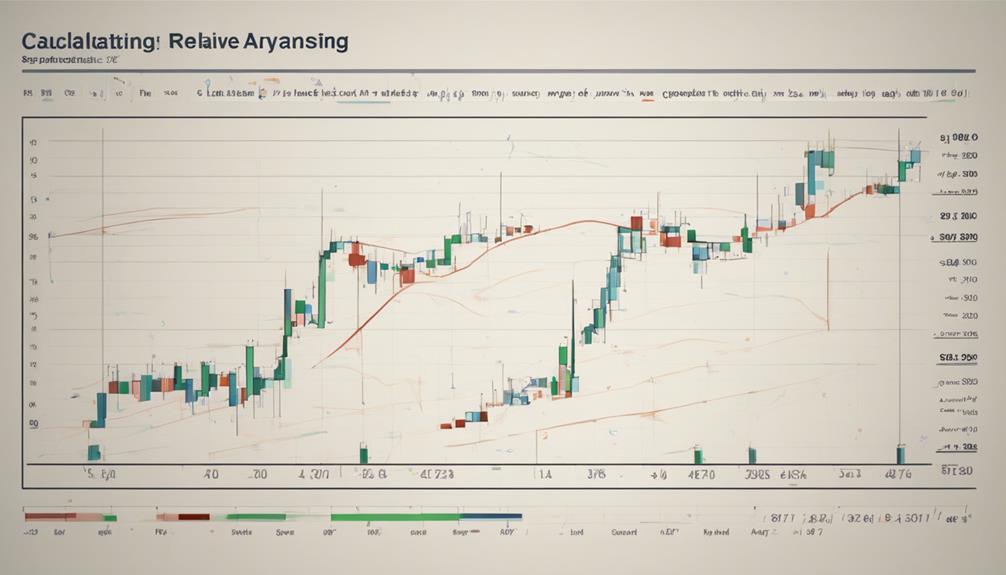
To initiate the process of analyzing relative strength for stocks, the first step involves collecting historical price data for both the stock of interest and the chosen benchmark index, such as the S&P 500. Ensuring that the price data covers the same time period is vital for an accurate comparison.
Daily closing prices for both the stock and the index are typically used to calculate the Relative Strength Index (RSI). It is essential to verify the accuracy of the price data to prevent errors in the relative strength calculation.
Organizing the stock and index prices in a spreadsheet or using a software tool facilitates easy comparison and analysis.
Calculating Relative Strength Ratio
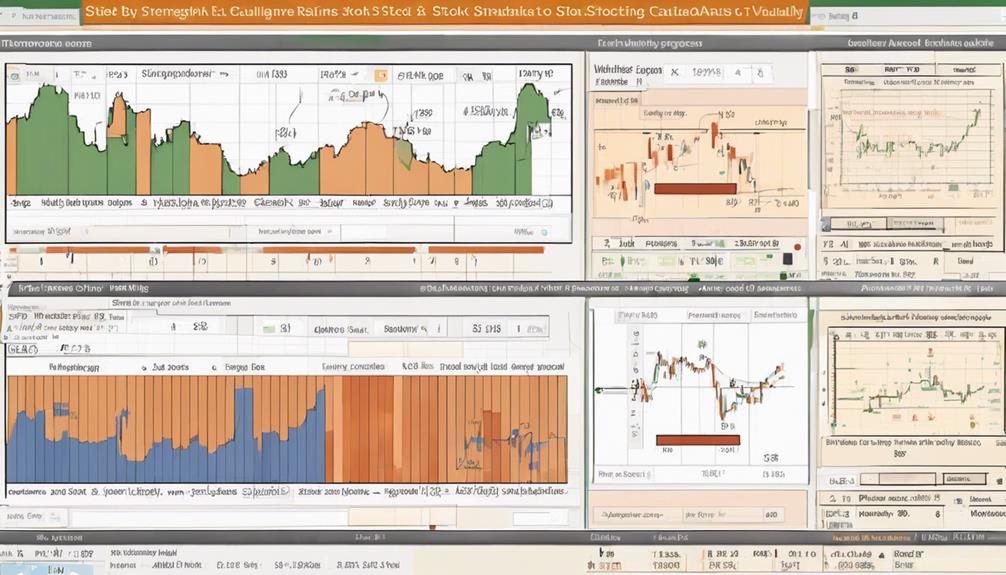
Utilize the Relative Strength Ratio as a fundamental metric for evaluating stock performance against a benchmark index, such as the S&P 500. When calculating the Relative Strength Ratio, consider the following key points:
- The RS Ratio is derived by dividing the price of a specific stock by the price of a chosen benchmark index.
- This calculation enables comparison of the stock's performance relative to the benchmark, indicating whether it is outperforming or underperforming.
- It serves as an important tool for identifying market leaders, particularly in times of market corrections, by highlighting stocks demonstrating significant strength.
- Understanding the RS Ratio is essential for promptly recognizing strong stocks, offering an edge in establishing positions and managing risks effectively.
Interpreting Relative Strength Values
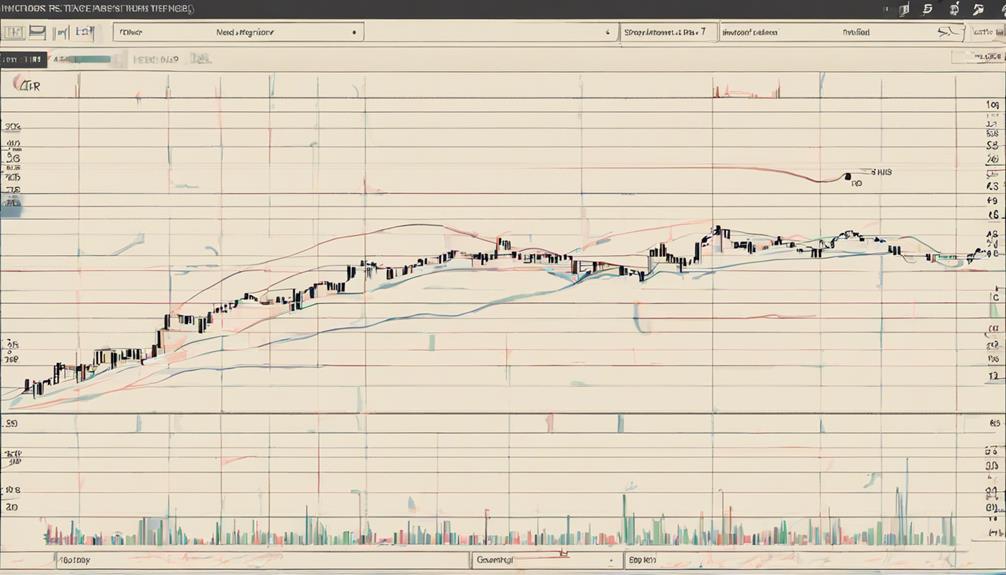
Interpreting Relative Strength values is essential for investors seeking to gauge a stock's performance against a benchmark index. Understanding the significance of Relative Strength values, comparing them to relevant benchmarks, and identifying trends can provide valuable insights for making well-informed investment decisions.
Relative Strength Importance
Understanding the significance of Relative Strength values is essential in effectively evaluating a security's performance against a benchmark index.
- RSI values range from 0 to 100, with overbought conditions above 70 and oversold conditions below 30.
- It helps identify securities that outperform or underperform a benchmark index, aiding in making informed investment decisions.
- Relative Strength formula: (Price of Security A / Price of Security B) x 100, enabling comparison of performance against benchmarks.
- An important tool in technical analysis, Relative Strength measures a security's strength relative to a benchmark, assisting in spotting trends, investment opportunities, and making buy/sell decisions based on performance relative to a benchmark.
Benchmark Comparison Tips
To refine stock analysis through benchmark comparison, one can effectively interpret relative strength values as indicators of a security's performance. Relative strength values above 100 signify that a stock is outperforming the benchmark index, while values below 100 indicate underperformance.
By comparing these values across multiple stocks, investors can identify market leaders exhibiting strong price performance. A rising relative strength line suggests increasing outperformance relative to the benchmark index, highlighting stocks with potential for significant price growth.
Additionally, evaluating relative strength values against specific sector or industry indexes can provide insight into a stock's performance within its relevant market segments. Understanding and analyzing relative strength values is essential for investors aiming to pinpoint stocks with promising price performance compared to the broader market.
Trend Identification Strategies
Employing sophisticated trend identification strategies involves a meticulous analysis of relative strength values to gauge a stock's performance vis-à-vis a chosen benchmark. When interpreting Relative Strength values, investors should consider the following:
- Relative Strength values above 100 indicate strong upward momentum, signaling that the stock is outperforming the market benchmark.
- A Relative Strength value of 100 suggests stability, as the stock is performing in line with the benchmark index.
- Values below 100 imply underperformance compared to the market benchmark, indicating weaker price movement.
- Utilizing Relative Strength in conjunction with a momentum oscillator can help identify potential trend reversals, providing valuable insights for decision-making.
Plotting the Relative Strength Line
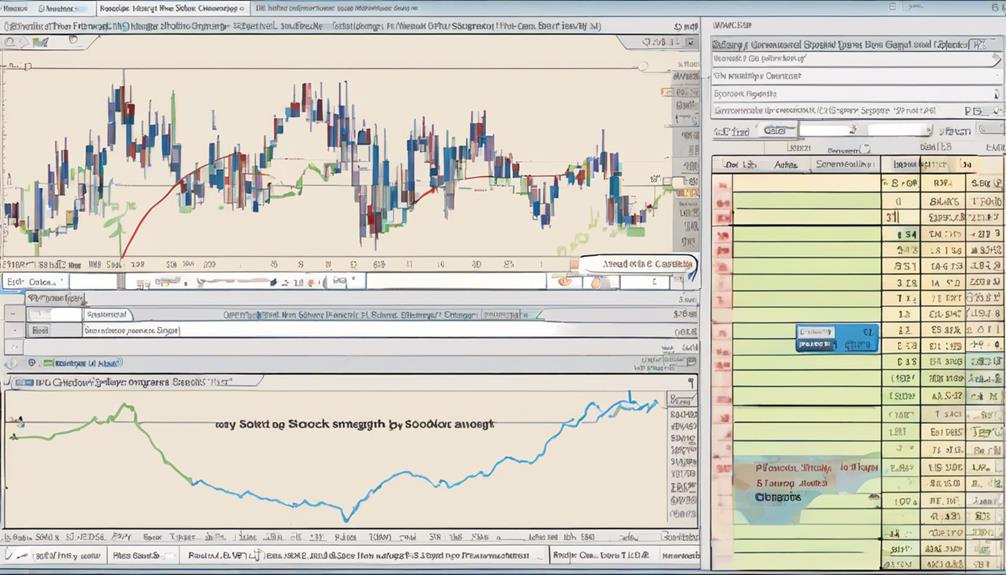
Plotting the Relative Strength Line on a graph allows investors to visually assess the performance of a stock in comparison to the S&P 500 index. The RS Line is a powerful tool for identifying market leaders and potential investment opportunities. By comparing the strength relative to the benchmark index, investors can gain insights into a stock's performance trends. Strong stocks with a rising RS Line often signal robust performance compared to the overall market. Monitoring the RS Line is particularly valuable during market corrections, as it can help in identifying high-quality stocks early on. Below is a table summarizing key points about plotting the relative strength line:
| Plotting the Relative Strength Line | |
|---|---|
| Helps identify market leaders | Shows stock outperformance |
| Provides insights into stock strength | Indicates potential investments |
| Monitors stock performance trends | Assists in early stock selection |
| Signals robust performance | Valuable during market corrections |
Using Relative Strength for Stock Selection
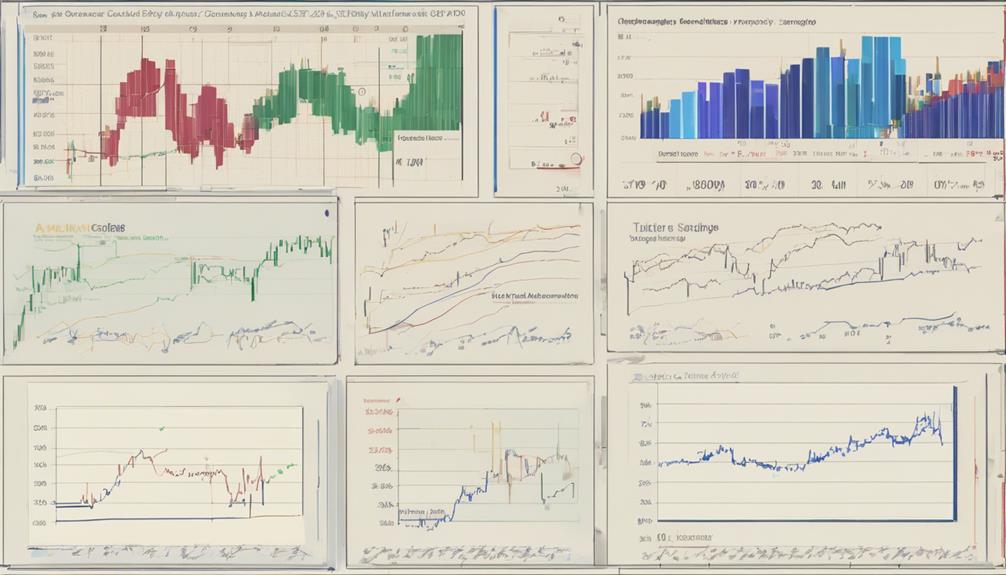
Analyzing a stock's relative strength provides investors with valuable insights into its performance compared to a benchmark index such as the S&P 500. Here are some key points to take into account when using relative strength for stock selection:
- Price Performance: Relative strength helps in evaluating how a stock is performing with regards to price compared to a chosen benchmark index, indicating whether it is outperforming or underperforming the market.
- Benchmark Index: By comparing a stock's price movement to a benchmark index like the S&P 500, investors can gauge its relative performance against the broader market trends.
- Market Leaders: Using relative strength can assist in identifying market leaders, which are stocks showing strong performance compared to the overall market, potentially signaling investment opportunities.
- Investment Insights: It serves as an important tool in stock analysis, offering insights into how a stock is faring relative to the market index and aiding in making informed investment decisions based on this comparison.
Identifying Market Leaders With Relative Strength
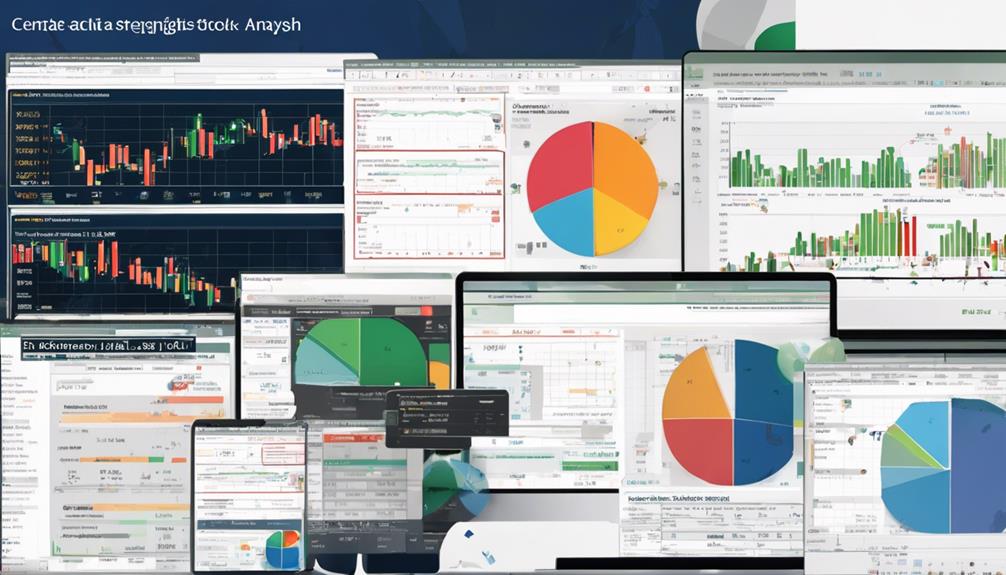
Identifying market leaders through Relative Strength analysis involves examining top indicators, understanding the significance of outperformance, and closely monitoring market performance trends.
By focusing on stocks displaying superior Relative Strength compared to the broader market, investors can pinpoint potential leaders poised for sustained growth.
Tracking how stocks perform relative to benchmarks provides valuable insights into market dynamics and helps investors make informed decisions for their portfolios.
Top Relative Strength Indicators
When evaluating stock performance, one essential aspect to take into account is the utilization of top relative strength indicators for identifying market leaders.
- Relative Strength Indicator (RSI): Compares a stock's performance to a benchmark index like the S&P 500.
- Calculation Method: Involves dividing the stock price by the benchmark price to determine relative strength.
- Early Identification: Important in corrections, as 80-90% of new stock bases form during such periods.
- Sign of Potential Growth: Strong relative strength can indicate stocks with potential for significant price increases.
Importance of Outperformance
In the realm of stock analysis, the ability to identify market leaders through outperformance, particularly with a focus on Relative Strength indicators, holds significant weight in guiding strategic investment decisions. This emphasis on strength and technical analysis can provide valuable insights into a stock's price performance relative to the benchmark. By recognizing stocks with superior Relative Strength early on, investors can potentially capitalize on better investment prospects. Understanding the importance of outperformance is vital for maneuvering market fluctuations and constructing a successful investment strategy.
| Importance of Outperformance | |
|---|---|
| Key Aspect | Identifying Market Leaders |
| Focus | Relative Strength Indicators |
| Benefit | Better Investment Opportunities |
| Relevance | Strategic Investment Decision-making |
Tracking Market Performance
A paramount aspect of evaluating market performance lies in the meticulous analysis of Relative Strength indicators to discern potential market leaders.
- Relative strength compares a stock's price performance to a benchmark index like the S&P 500.
- Calculated by dividing the stock price by the benchmark price, the relative strength line helps identify market leaders.
- During market corrections, 80-90% of new stock bases are formed, making it essential to track relative strength for early identification.
- Strong price and volume action should accompany early strength in the relative strength line analysis.
Managing Risks With Relative Strength
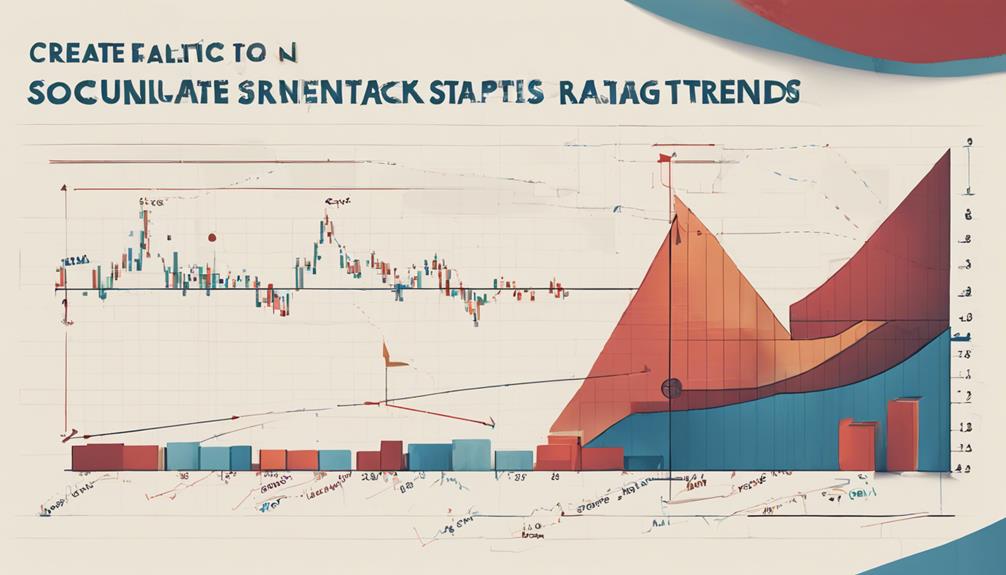
Utilizing Relative Strength as a risk management tool in stock analysis allows traders to pinpoint stocks that demonstrate superior performance compared to the overall market benchmark. By identifying stocks that consistently outperform the market, traders can manage risks effectively. The RS line, a fundamental component of Relative Strength analysis, serves as a valuable tool for evaluating risk and potential returns. Understanding and utilizing the RS line enables traders to make informed decisions based on a stock's relative strength compared to the broader market, reducing risk exposure during market downturns.
Moreover, managing risks with Relative Strength involves selecting stocks that exhibit consistent strength relative to the market. This approach can aid in risk mitigation strategies by focusing on market leaders with the potential for higher returns. By incorporating Relative Strength into risk management practices, traders can enhance their decision-making process and navigate market fluctuations more confidently. In essence, Relative Strength analysis not only identifies strong performers but also serves as a strategic tool for managing risks effectively in stock trading.
Advantages of Relative Strength Analysis
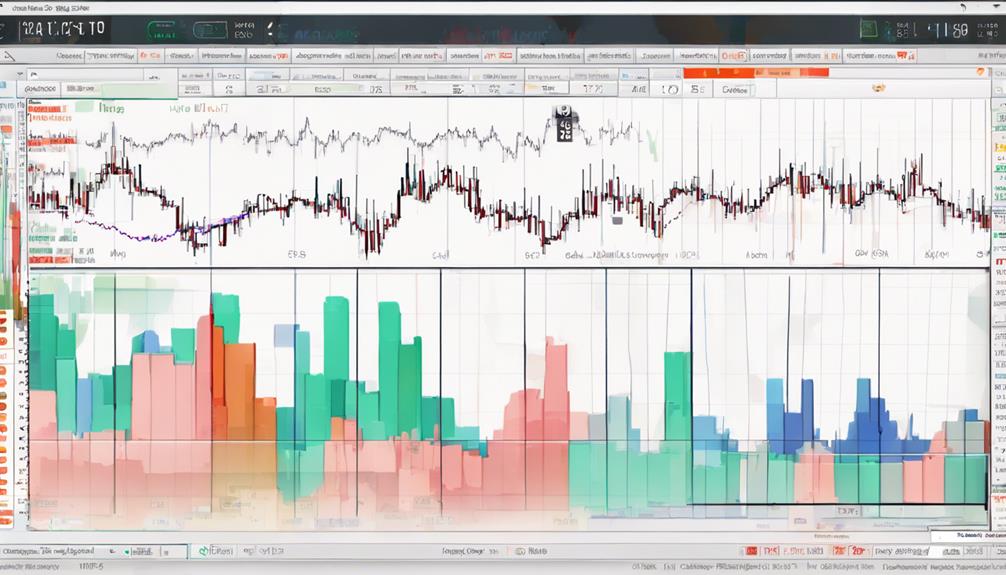
Relative strength analysis offers key advantages in stock evaluation by facilitating comparisons that reveal market leaders and trends.
This method provides valuable insights into performance differentiations among various stocks, aiding investors in identifying potential winners.
Importance of Comparison
In the domain of stock analysis, the importance of comparison through Relative Strength Analysis cannot be overstated. This analytical tool offers valuable insights into a security's performance compared to a benchmark index, such as the S&P 500, enabling investors to make informed decisions.
The advantages of comparing relative strength include:
- Identifying outperforming and underperforming stocks in the market.
- Aiding in the identification of potential growth opportunities.
- Potentially earning higher returns by leveraging the analysis.
- Widely used in the financial industry to assess stock performance against the market.
Identifying Market Trends
Comparing a stock's performance to a benchmark like the S&P 500 through relative strength analysis is instrumental in identifying prevailing market trends and potential investment opportunities. By analyzing how a stock's price changes relative to the market, investors can gauge its strength and potential for growth.
This comparison provides valuable insights into stock performance, aiding in investment decision-making. Stocks that consistently outperform the market may indicate strong fundamentals or market favor, presenting opportunities for investors.
Understanding these trends through relative strength analysis allows for strategic portfolio adjustments, enhancing diversification and risk management strategies. Utilizing relative strength analysis can effectively guide investors towards selecting high-performing stocks aligned with current market trends.
Performance Differentiation Insights
Drawing insights from performance differentiation through relative strength analysis provides investors with a strategic advantage in identifying potential market leaders and optimizing investment decisions.
- Early Identification: Relative Strength analysis helps in spotting stocks showing early signs of strength compared to the market.
- Outperformance: It highlights stocks that consistently outperform the benchmark index, indicating potential market leaders.
- Risk Mitigation: Understanding Relative Strength aids in selecting stocks with strong performance during market corrections.
- Informed Decisions: By comparing a stock's performance to the broader market conditions, traders can make well-informed investment choices.
Application of Relative Strength in Trading
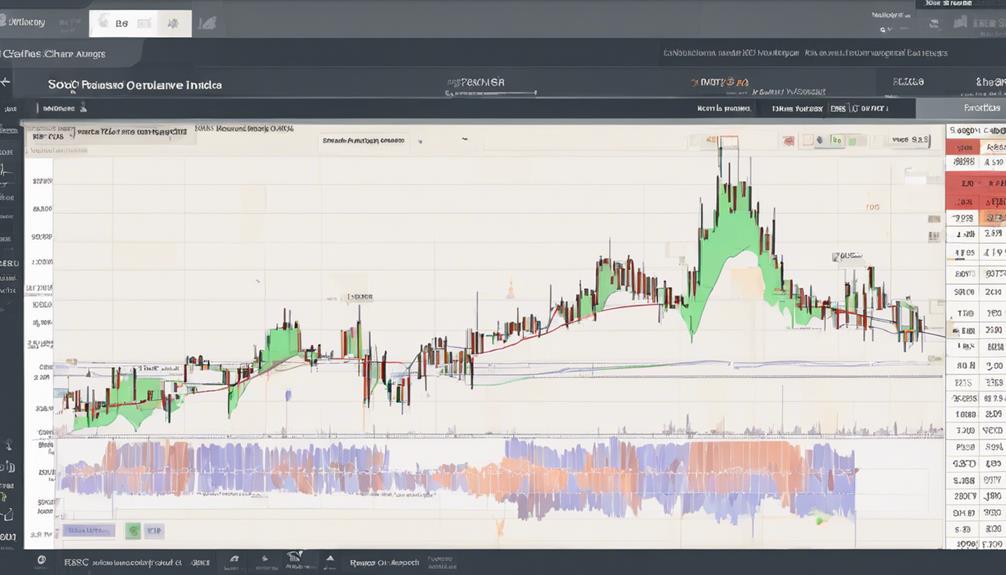
When analyzing stock performance, the application of Relative Strength in trading provides valuable insights into a stock's standing compared to a benchmark index such as the S&P 500. By comparing a stock's price performance to that of a benchmark index, investors can use Relative Strength as a momentum indicator to identify market leaders. This calculation involves dividing the stock's price by the benchmark's price over a specific period. Stocks that consistently show high Relative Strength ratios are often considered market leaders, indicating strong performance relative to the overall market.
Utilizing Relative Strength in trading can lead to more informed investment decisions, especially when identifying potential outperformers during market corrections. Traders can monitor the Relative Strength Line to assess a stock's performance relative to the benchmark index. Understanding and applying Relative Strength in trading strategies can help investors navigate volatile market conditions and capitalize on opportunities presented by stocks showing superior strength compared to the broader market.
Tips for Efficient Relative Strength Calculation

For precise evaluation of stock performance in comparison to a benchmark index like the S&P 500, efficient calculation of Relative Strength is essential. When calculating Relative Strength, consider the following tips for an effective analysis:
- Choose a benchmark index: Select a widely recognized benchmark index such as the S&P 500 to guarantee a meaningful comparison.
- Utilize price momentum: Look for stocks with strong price momentum relative to the benchmark index, indicating potential outperformance.
- Identify market leaders: Monitor the relative strength line over time to pinpoint market leaders, which are stocks showing consistent strength compared to the index.
- Evaluate volume along with relative strength: Incorporate healthy price and volume action in conjunction with relative strength analysis for a thorough assessment of stock performance.
Implementing Relative Strength in Investment Strategies
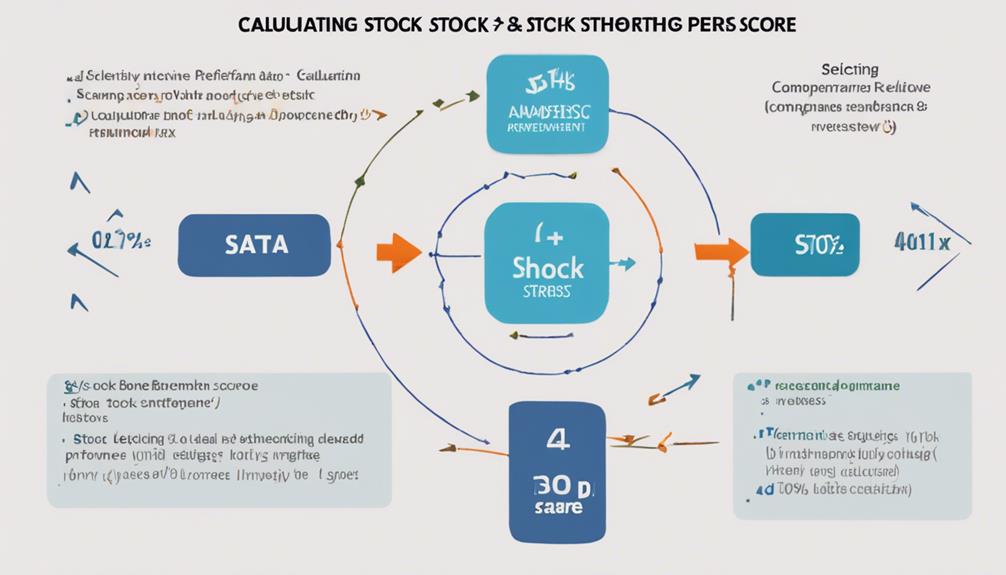
Implementing Relative Strength analysis in investment strategies allows for a vital approach to identifying top-performing stocks and gaining a competitive edge in the market. By comparing a stock's price performance to a benchmark index like the S&P 500, investors can pinpoint market outperformers.
The Relative Strength Line, calculated by dividing the stock price by the benchmark index price, serves as a valuable tool for recognizing potential market leaders early on. This early identification not only aids in risk management but also enables investors to capture significant price moves.
When incorporating Relative Strength into investment strategies, it is essential to take into account factors such as healthy price and volume action, as well as strong fundamentals. By leveraging Relative Strength analysis effectively, investors can streamline their stock evaluation process and enhance their chances of identifying stocks poised for market outperformance.
How Can I Use the Williams %R Indicator in Calculating Relative Strength for Stock Analysis?
Mastering Williams %R indicator involves understanding overbought and oversold levels in stock analysis. By plotting the indicator on a chart, traders can analyze the momentum of a stock and identify potential buying or selling opportunities. Calculating relative strength with the Williams %R indicator helps traders make informed decisions in the market.
Frequently Asked Questions
How to Calculate the Relative Strength of a Stock?
In trend analysis, calculating relative strength of a stock involves comparing its price performance to a benchmark index, like the S&P 500, to gauge its price momentum relative to the market. This comparison aids in identifying market leaders and potential high performers.
Utilizing technical indicators, particularly the Relative Strength Line, allows investors to make informed decisions on stock selection and risk management, providing a strategic advantage in managing market fluctuations.
How to Check Relative Strength of a Stock in Trading View?
To check the relative strength of a stock in TradingView, you can compare its performance to a benchmark index. By dividing the stock price by the index price, you can assess if the stock is outperforming or underperforming the market.
This analysis provides valuable trading signals, aiding in trend analysis and helping traders identify potential market leaders or laggards. Monitoring relative strength in TradingView allows for informed decision-making based on market comparison.
How Do You Calculate Relative Stock Performance?
When evaluating stock performance, utilizing market benchmarking techniques through stock comparison analysis is pivotal. Calculating relative strength index (RSI) involves dividing a stock's price by the S&P 500 price. This method provides insights into how a stock fares against the broader market, aiding in identifying potential market leaders.
Interpreting the RS line early can enhance risk management strategies and maximize profit potential, especially during market corrections. Incorporating RSI analysis into fundamental and technical evaluations enhances stock selection precision.
How to Read RSI in Stock Market?
In the stock market, reading the Relative Strength Index (RSI) involves interpreting trends, RSI signals, and conducting momentum analysis.
RSI values above 70 suggest overbought conditions, indicating a potential reversal, while values below 30 signal oversold conditions.
Traders utilize RSI to confirm price movements and generate buy or sell signals.
Understanding RSI helps gauge trend strength, interpret market sentiment, and make well-informed trading decisions based on historical price data analysis.
Conclusion
To sum up, mastering the calculation of relative strength is essential for effective stock analysis. By understanding the significance of relative strength ratios and interpreting their values accurately, investors can make informed decisions and optimize their trading strategies.
Implementing relative strength analysis in investment approaches can lead to remarkable success in the unpredictable world of stock markets. It is a powerful tool that can greatly enhance one's ability to identify profitable opportunities and manage risks with confidence.


